08 August 2022
Wheat is one of the most traded agricultural commodities in the world. It is “unrivalled in its range of cultivation” thanks to the diversity of its variants and the degree to which it has become central to human culture. In 2021-22, the world produced 777m tonnes of wheat and consumed almost as much.
Whether by value or weight, wheat accounts for more than 40% of the global cereals trade.
Wheat is principally grown and consumed domestically, but significant quantities are also traded internationally. The largest exporters are Russia, Canada, the US, France and Ukraine. Its biggest importers include Egypt, China, Turkey, Indonesia and Turkey, with Pakistan and China emerging as the fastest-growing markets.
Climate extremes, such as floods, droughts and heatwaves, already strongly affect the world’s wheat crop. In India, for example, a blistering heatwave in early 2022 shrivelled swathes of harvest-ready wheat crops, hindering the country’s ability to raise exports in light of the war in Ukraine.
And research shows that the continued rise of global temperatures could reduce yields around the world.
As wheat prices spike and fall and the world faces “an unprecedented hunger crisis”, Carbon Brief takes a look at the prospects for growing wheat in a warming world.
In 2019, wheat was the second most exported crop, accounting for 38% of all exports.
Developing countries consume 77% of total global wheat production and account for 24% of food commodities imported by them.
More than two-thirds of global wheat is used for food and one-fifth is used for livestock feed.
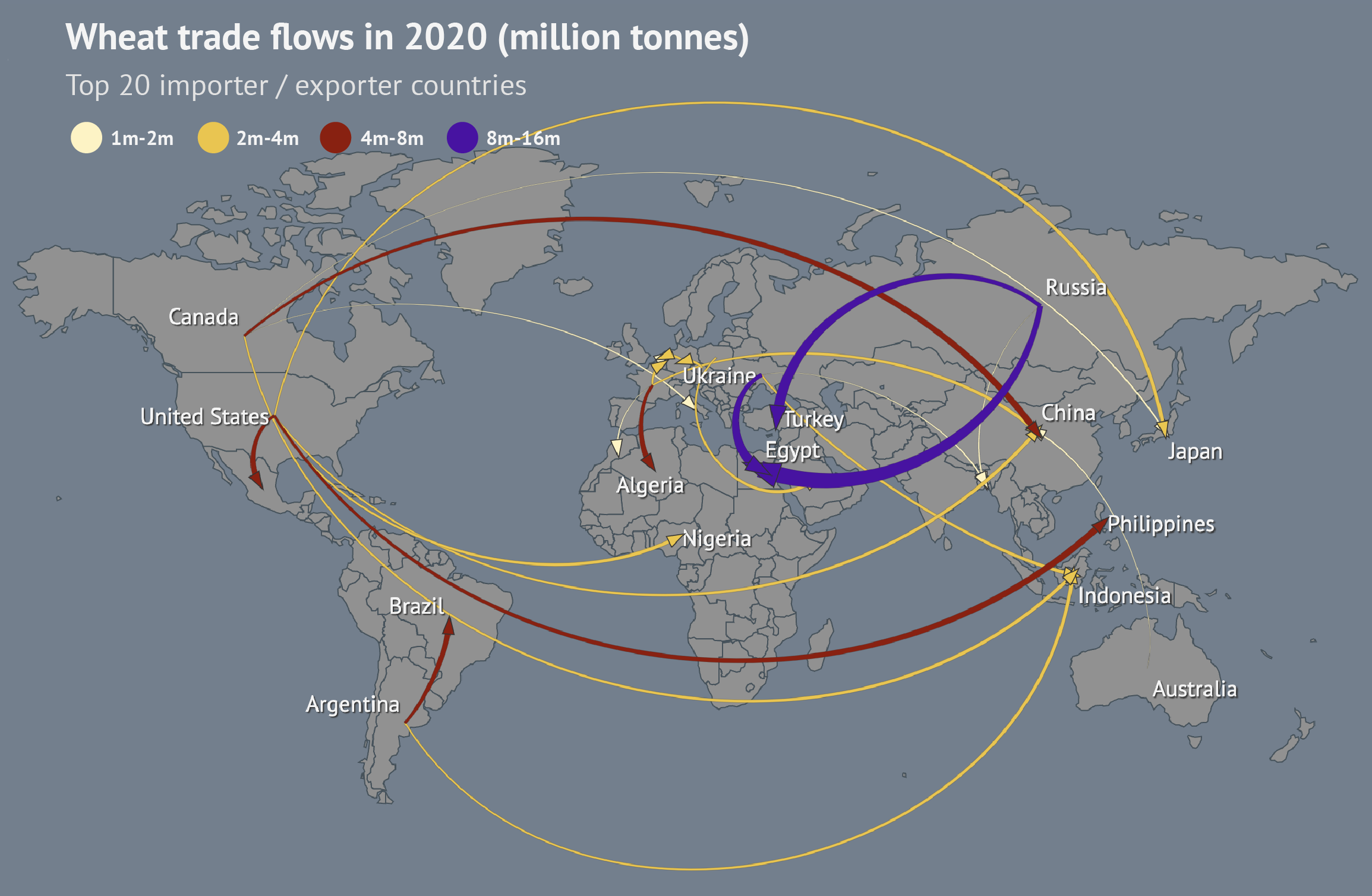
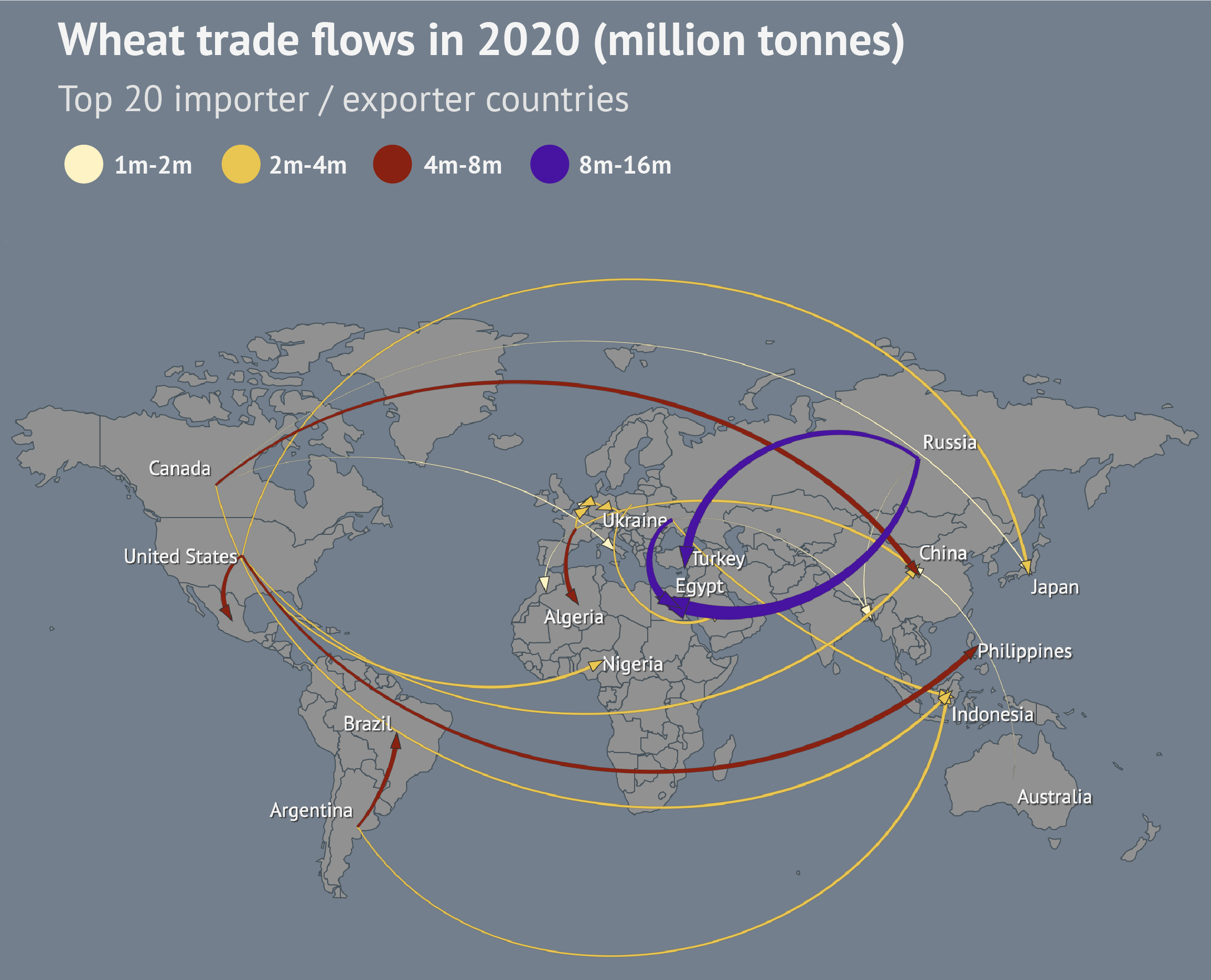
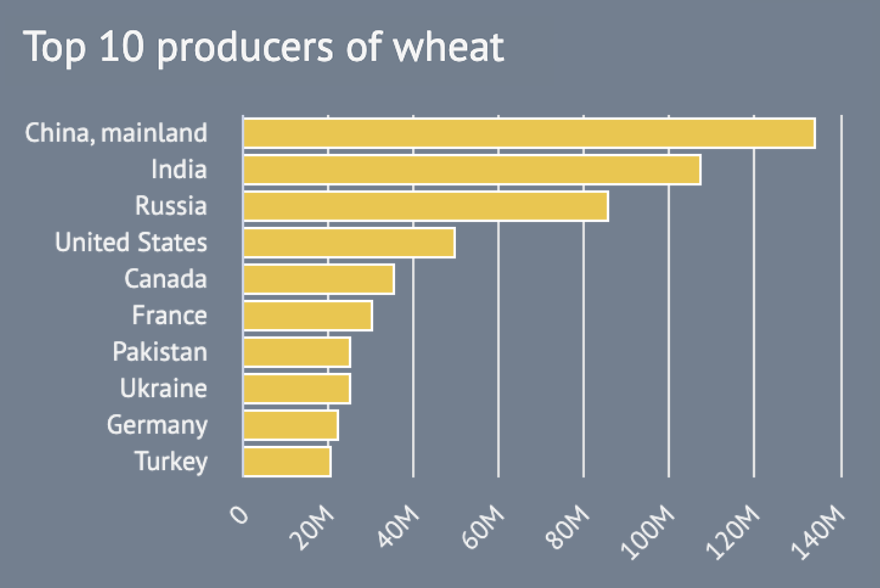

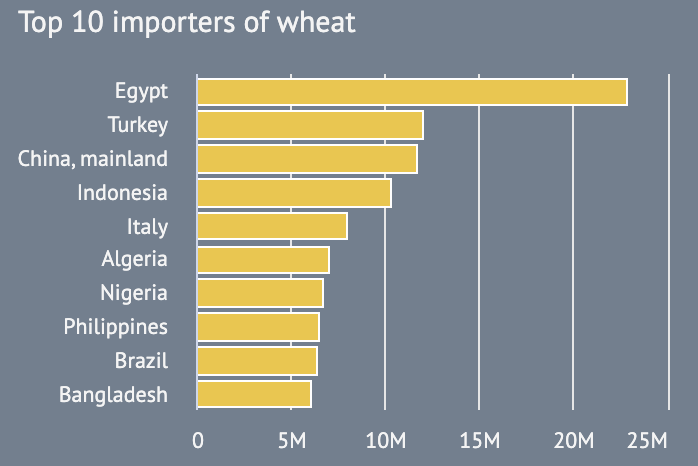
Producer data: FAO
Source: Chatham House
The history of wheat is complex and closely associated with the advent of plant domestication, modern agriculture and the formation of established civilisations.
Some of the earliest wheat belonged to a family of grasses called Triticae, from where it gets its current Latin name. The word wheat itself is drawn from the Old English term hwæte, the old German term weizzi and the Welsh term gwenith. In nearly all cultures, wheat can be broadly translated as “that which is white”.
Wheat's earliest ancestors are wild einkorn and wild emmer – three cereals in a group of “founder crops” believed to have been domesticated between 10,000 to 12,000 years ago in the Fertile Crescent – a region that stretches from Palestine, Jordan and Lebanon to Syria, Iraq, southeastern Turkey, northern Egypt and Iran. From the Middle East, wheat apparently spread throughout Europe and eastwards, towards India and modern-day Pakistan and then Africa, although recent studies challenge the idea of a “core area” of agricultural evolution. Today, wheat is harvested from more land than any other crop in the world.

Wheat varieties have been subjected to continuous genetic selection, whether consciously or unconsciously, for centuries. And today’s thousands of wheat varieties all originate from the first 14 species. Modern varieties tend to have strong seed heads that do not shatter easily to prevent loss at harvesting, as well as bigger seed sizes, tougher ears and fewer stems or tillers.
Wheat is essentially a cold-weather crop, with an optimal growing temperature of 15-20C – and a minimum daily temperature for measurable growth of around 5C. It has been adapted to grow in most rainfall conditions, but, for high yields, it requires between 450 to 650mm of water, depending on the climate and length of its growing seasons. Ideally, wheat needs adequate moisture during its growing season, but too much moisture can lead to lost yields from root diseases.
Although wheat thrives best between latitudes of 30-60 degrees north and 27-40 degrees south, cultivation knows no limits, with varieties being grown from the Arctic circle to the equator and from sea level to the high mountains of Tibet. In temperate climates, it is grown predominantly as a rainfed crop. In the sub-tropics, it is grown in winter – often with the help of irrigation.
Countries that grow and produce the most amount of wheat include China, India, Russia, USA, Canada, France, Pakistan and Ukraine.
Based on its hardiness, sensitivity to daylight and chilling needs, wheat can be grouped into winter and spring varieties. Winter wheats need around 180-250 days to mature and a cold period during early growth. Spring wheats take 100-130 days to mature and do not need an early cold period.
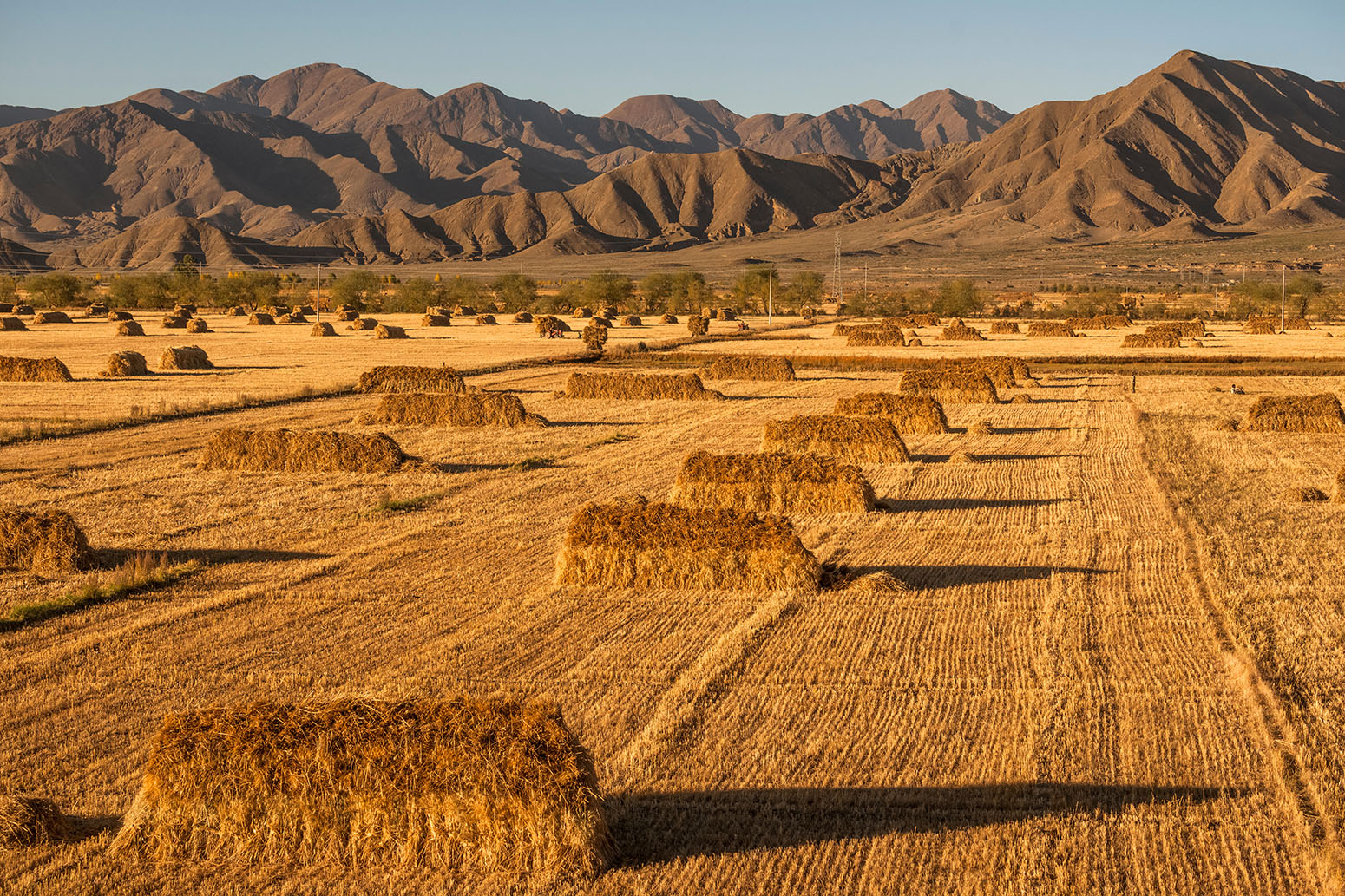
The US wheat industry groups varieties into six classes, based on planting season, colour and grain characteristics: hard red winter; hard red spring; soft red winter; durum; hard white; and soft white.
Of the kinds of grain, durum is the hardest, contains the most gluten and is used for making semolina that goes into pasta. Hard wheats come second in terms of gluten content– they include hard winter wheats and hard spring wheats, and go into bread and other flours. Soft wheats contain more starch and the least gluten-producing protein and are milled for pastry and other flours. Chapati flour or atta is stone-milled from soft to medium-hard Indian wheats.
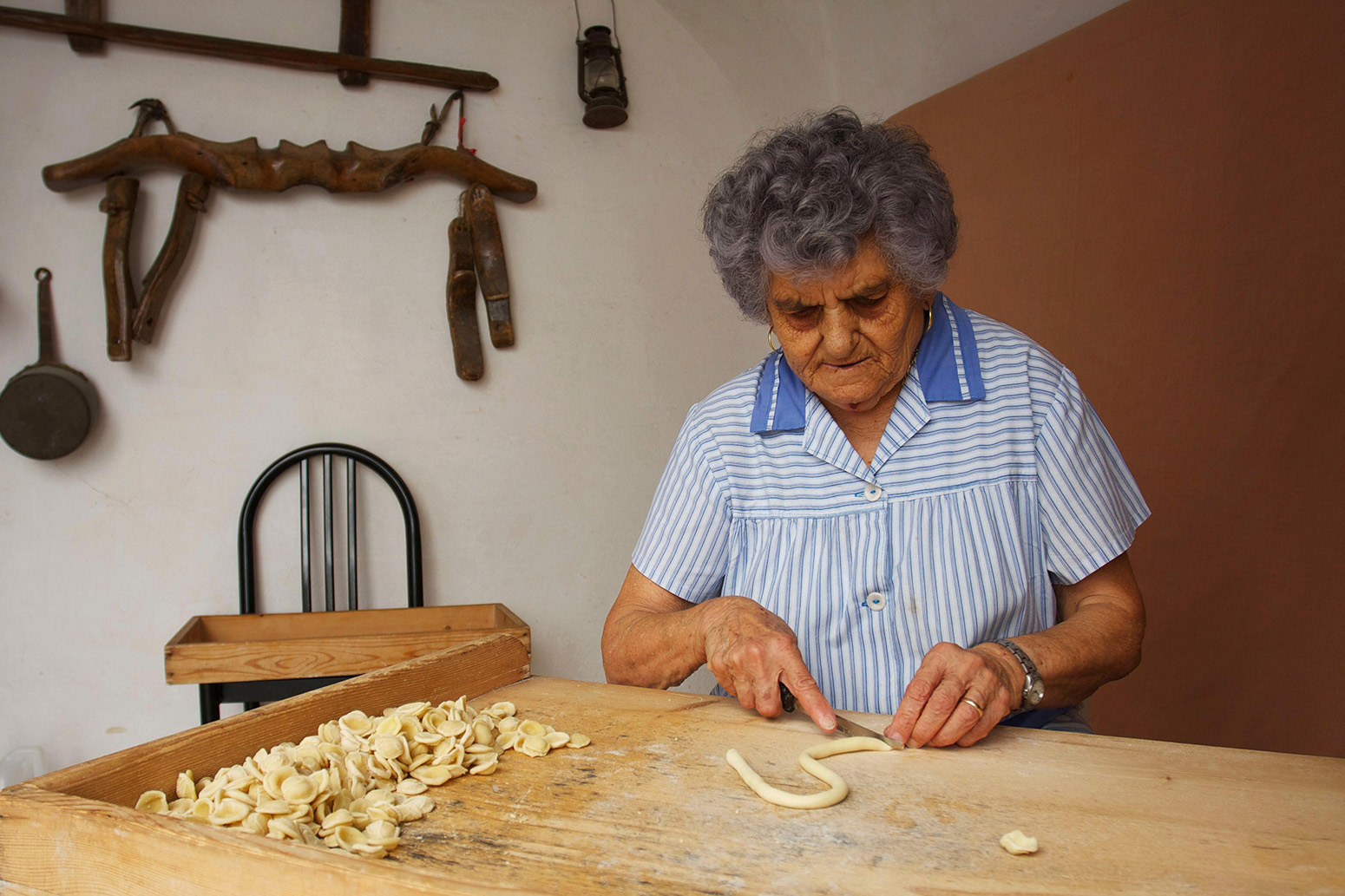
Roughly 70% of global wheat is used for food, while nearly 20% is used for livestock feed. On average globally, each person consumes 68 kilos of wheat a year. For those in a low-income food deficit country (LIFDC), this drops to around 40 kilos a year.
In dry mills, which form the majority of ethanol plants, grain is ground to a “meal”, slurried with water to form a “mash”, to which enzymes are added to convert starch to sugar and ammonia added as a nutrient. The mash is heated to kill bacteria, then cooled and sent to fermenters where yeast breaks down the sugar into ethanol and CO2. Cellulosic production that uses wheat straw or crop residue to make fuel is less mainstream, as sugars are harder to extract.
Increasingly, wheat is also being diverted for biofuels. Wheat is rich in starch and sugars that are easy to extract, which form the raw materials or “feedstock” for bioethanol production.
In dry mills, which form the majority of ethanol plants, grain is ground to a “meal”, slurried with water to form a “mash”, to which enzymes are added to convert starch to sugar and ammonia added as a nutrient. The mash is heated to kill bacteria, then cooled and sent to fermenters where yeast breaks down the sugar into ethanol and CO2. Cellulosic production that uses wheat straw or crop residue to make fuel is less mainstream, as sugars are harder to extract.
While corn is the preferred feedstock in the US and sugarcane in Brazil, wheat is one of the main crops for biofuel production in the EU, accounting for 2% of Europe’s grain supply or 3.9m tonnes, followed by sugar beet and maize. By 2030, the EU wants to increase the share of renewable energy in transport “to at least 14%, including a minimum share of 3.5% of advanced biofuels”.
The war in Ukraine has brought the food vs fuel debate to the fore. On 31 March 2022, for example, the European Commission said it supported member states reducing their biofuel-blending mandates “which could lead to a reduction of EU agricultural land used for the production of biofuel[s], thus easing pressure on the markets for food and feed commodities”.
According to Brussels-based non-profit Transport & Environment, cutting less than a third of wheat used in Europe’s biofuel mix could compensate for Ukraine’s failing supply, while shielding EU livestock farmers and consumers from food insecurity.
The figure below looks at biofuels used in the EU in 2016, based on their raw materials and their source.
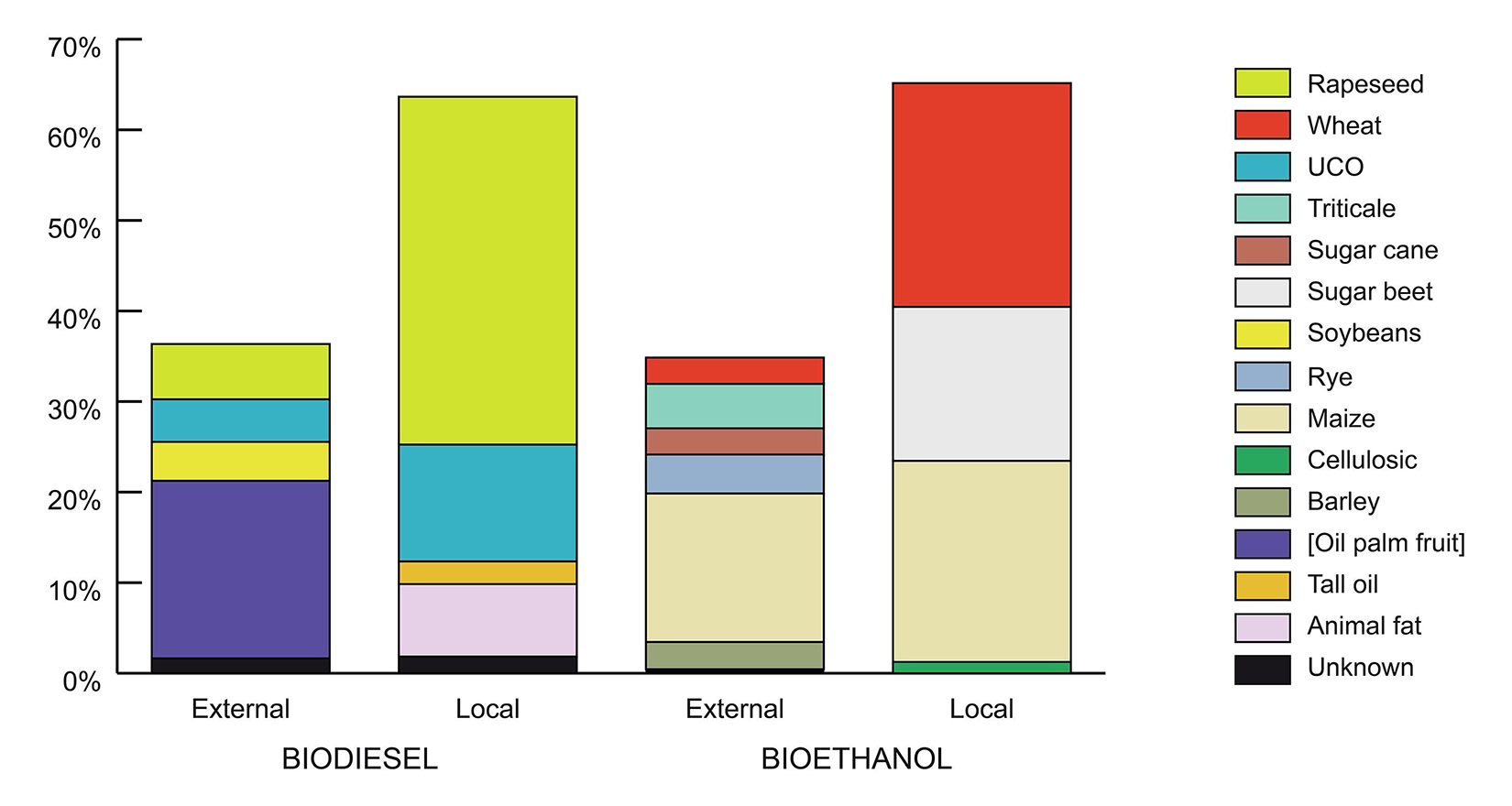
According to the FAO’s Global Food Outlook, international wheat prices in 2022 are “at levels not reached since 2008, following tight global availability due to reduced harvests and export suspensions in major exporter Ukraine and emerging exporter India”.
Meanwhile, a special report by the Committee on Food Security’s (CFS) high-level panel of experts stated that “there is no global food supply shortage”, but “price shocks are clearly being exacerbated by dysfunctions in global grain markets, including commodity speculation”, leading to “higher realworld prices that affect the world’s poorest people”.
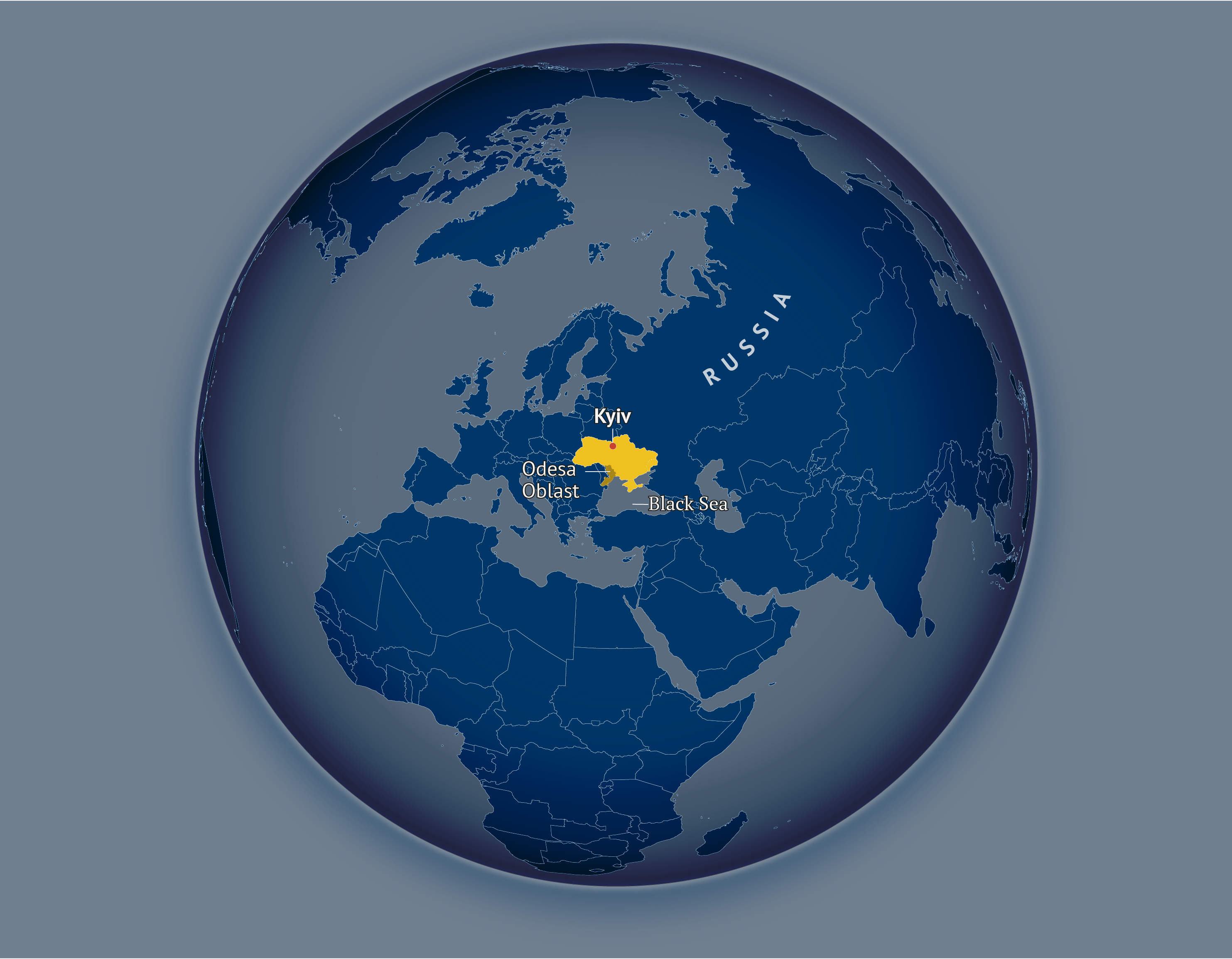
Often referred to as the “breadbasket of Europe”, Ukraine is the eighth-largest wheat producer globally, growing a fifth of the world's high-grade grain varieties. In 2019, Ukraine became the largest supplier of soft wheat to the European Union with a share of 42% of total imports. In 2020, Ukraine accounted for 9.1% (by volume) of all wheat traded globally. It produced a record 32.4m tonnes of wheat, of which it exported 20.1m tonnes, with the biggest shipments going to Egypt, Indonesia and Turkey. Some countries – such as Eritrea and Somalia – rely almost entirely on Ukraine and Russia for their wheat imports.
According to a World Bank report, published in February 2022, a warming climate could bring more favourable conditions for increased productivity of winter wheat in parts of Ukraine by mid-century. However, the report also warns of “the unpredictability of precipitation patterns especially for the latter part of the century”. In 2019-20, for example, due to droughts, southern regions of Ukraine lost 3% of winter crops. The Odesa region suffered the most, where 10% of winter wheat died.
In recent years, Ukrainian authorities have publicly acknowledged the importance of a transition to “climate-positive technologies” in agriculture, but this has not yielded sufficient policy to support it, say experts. For example, intensive agricultural practices that lead to soil degradation and loss of biodiversity are still common. In May 2022, Ukrainian president Volodymyr Zelensky signed a law to reform the irrigation system in Ukraine. This seeks to establish clear rules on investing in the development and modernisation of reclamation infrastructure, increasing the area used for irrigation and preventing soil degradation.
Ukraine’s recently updated pledge under the Paris Agreement sets a target for greenhouse gas emissions from the agricultural sector at 44.5m tonnes of CO2e in 2030, which corresponds to an increase of 4.7% compared to 2019 and a decrease of 51% from 1990 levels.
However, at present, Ukrainian wheat production is dominated by the impact of the war. Since the beginning of the invasion, Russia has blocked and mined all of Ukraine’s Black Sea ports, hindering nearly all grain exports. On 22 July, Ukraine and Russia signed a UN-backed deal mediated by Turkey to resume Ukrainian grain exports. However, Russia fired missiles at the Odesa seaport just hours later, drawing condemnation and concern, with even the UN Security Council unsure whether to welcome the deal. Due to the ongoing difficulties, 20-30% of the areas where winter wheat is grown are likely to remain unharvested during the 2022-23 season.
Oleksandr Kubrakov, Ukraine’s infrastructure minister, has confirmed that mines will be removed “exclusively in the corridor for grain export”. Foreign income from grain exports “is a matter of survival for the entire industry” and “other continents”, he has stressed. The Ukrainian government has also said that “drought in Europe…a high harvest in Brazil [and] the ability of America to reduce the percentage of bioethanol in regular gasoline” are other factors that could affect the global price of wheat in coming months.
Observed climate change is already affecting the world’s wheat crop – through rising temperatures, changing rainfall patterns, pest outbreaks and the greater frequency of extreme weather events.
According to the IPCC’s latest report on climate impacts, climate change has increased wheat yields in eastern Asia and northern Europe, but its effects are “mostly negative” on crop yields and quality across sub-Saharan Africa, South America, the Caribbean, southern Asia and western and southern Europe.
While warming in higher latitudes has expanded potential growing areas, it has also altered wheat’s phenology – that is, how biological phenomena such as flowering respond to seasonal changes in climate – warned the IPCC’s report with high confidence. This could potentially cause plant-pollinator and pest mismatches, such as plant pathogens showing up in the wrong place at the wrong time. Global wheat yield losses based on how insect pests respond to rising temperatures are projected to increase by 10-25% for every degree of warming, with pests able to thrive and persist even in once-cold Nordic countries.
One of the most visible recent impacts of extreme heat has been on India’s wheat crop from a spring heatwave in 2022 (discussed further in the case study below). However, this was not an isolated event. A 2014 study estimated that, in 2010, the combined effects of ozone pollution and heat in India accounted for a 36% loss in wheat yields, with “some densely populated states experiencing 50% yield losses”
In Australia, declining rainfall and higher temperatures have restricted yield growth between 1990 and 2015. Heat and drought combined decreased global average wheat yields by 9.2%, said one study cited in the IPCC report.

Climate change is also affecting the nutritional value of wheat. The IPCC’s special report on land in 2019 observed with high confidence that while increased CO2 is projected to be beneficial for crop productivity at lower warming levels, it is projected to reduce nutritional quality. For example, in experiments where wheat was grown at atmospheric CO2 levels of 546-586 parts per million (ppm), yields had 6-13% less protein, 4-7% less zinc and 5-8% less iron. (Global CO2 levels are currently around 420ppm and would reach 546-586ppm around 2060-2080 under SSP2-4.5, the emissions pathway that is similar to the collective ambition pledged under the Paris Agreement.)
Another study found that increasing CO2 “barely offsets the adverse impacts of warming and drought” in countries such as Germany and France, with a yield loss of 3%, while yields were around 6% less than expected in China, Russia, Ukraine and Kazakhstan at current CO2 levels.

There are also supply chain impacts to consider, which have shown themselves to be increasingly vulnerable to disruptions, such as extreme weather and war. In late 2021, storms blocked access to the Port of Vancouver that handles half of Canada’s wheat shipments, leaving “mountains of wheat and canola” stranded during peak shipping season. Russia’s blockade of wheat shipments from Odesa, meanwhile, has earned it condemnation for “weaponising food” and “blackmailing the world”.

India is the world’s second-largest wheat producer after China, producing more than 100m tonnes of grain in 2020. As an exporter, however, it accounts for only 0.5% of the global wheat trade, exporting mostly to neighbours Bangladesh, Nepal and Sri Lanka and to the UAE and USA.
India was not traditionally a large wheat producer or exporter. In 1951 – the year the country became a republic – wheat production was just 6m tonnes. Post-independence, India relied on wheat imports and food assistance, pushed in particular by the US as a market for its surplus, as leverage to secure support for its foreign policy goals and to gain assurance that India would implement agricultural reforms.
Most of India’s wheat has typically been produced by its north-western states of Punjab and Haryana, as well as western Uttar Pradesh, which contribute more than 60% of the wheat procured by the Food Corporation of India. Drained by the glacier-fed river Indus and its tributaries, the plains of Punjab and Haryana were once rich with alluvium deposits. Coupled with cooler temperatures, light winter rains and a vast network of tubewells and canals, Punjab and Haryana became the nation’s granary after the “Green Revolution”. (This term was coined by William S Gaud of the US Agency for International Development (USAID) to symbolise policies and technologies implemented in developing nations between the 1940s to 1960s to increase food production and potentially stave off famines.).
Along with high-yielding varieties, the Green Revolution ushered in an era of emissions-intensive agriculture: chemical fertilisers, pesticide use, tractors and farm machinery and expanded irrigation, with some noticeable success, in the case of wheat. It extracted long-term environmental, climate, health and nutritional costs of its own: depleted groundwater, nitrate pollution, waste emissions, stagnating or declining yields, loss of indigenous crop diversity and debt from rising input costs plague Indian farmers, particularly smaller farmers.
India’s wheat production is already being impacted by climate change. In April 2022, 14 farmers took their own lives in Punjab because of drops in yield following a brutal heatwave. The Guardian reported that India’s wheat farmers found themselves with at least 50% less grain to sell.
Punjab is also seeing significant changes in rainfall patterns, meteorological droughts and whitefly infestations, Scroll.in reported, along with locust scares. As a result, its contribution to national grain stores has been declining, while studies show that yields in roughly two-thirds of India’s wheat harvested area (18.5m hectares) have not improved in the recent decade. In mid-April, Indian prime minister Narendra Modi promised US president Joe Biden that India could feed the world, but, by mid-May, he had imposed a “hasty ban” on wheat exports to protect its own food security. Global wheat prices jumped by 6% after the announcement.
Wheat and rice are still the most dominant crops in the country because of a procurement system by which farmers receive a minimum support price (MSP) for their harvests. While this has provided climate-vulnerable farmers with predictability, stability and income assurance, it has discouraged crop diversification and allowed emissions-intensive agriculture to persist, say experts.
One of the key issues behind year-long protests by farmers primarily in the northern wheat belt was a fear that three agricultural deregulation policies would benefit agribusinesses, while signalling a withdrawal from current patterns of procurement at MSP. The three laws were repealed in December 2021, but farmers’ demands for support for other crops remains, a move that experts say is essential to aid a transition that is slow, but necessary, for India’s poor and for the country to achieve its climate and food security goals.
The emissions caused by growing wheat differ from country to country and are heavily influenced by growing environments and inputs used. For example, in the US, one study estimated that each kilo of wheat grown in the US in 2010 caused 1.1kg of CO2e emissions. For China, this was estimated at 0.75kg of CO2e per kilo in 2013.
The use of fertilisers, pesticides, diesel-fed heavy machinery and subsidised electricity from fossil fuels for irrigation all play a part in wheat’s environmental footprint. Then, there are emissions from direct and indirect land-use change from growing wheat for food or biofuels, which are not always easy to estimate.
Most significant among these is wheat’s reliance on nitrogen (N) fertilisers, produced by the highly energy-intensive Haber–Bosch process that depends on fossil fuels, as does its transport from production centres.
Nearly a fifth of the world’s nitrogen-based fertiliser is deployed to grow wheat. However, wheat is the least efficient major crop for nitrogen use, taking up less than half of the nitrogen applied. The rest finds its way into ecosystems and the atmosphere via a “nitrogen cascade”, harming the biosphere, soil fertility, water systems and contributing to climate change.

Nitrogen can leach as nitrate into water sources, resulting in algal blooms and aquatic “dead zones”. A notable example is the New Jersey-sized dead zone in the Gulf of Mexico, downstream from the grain fields of the US midwest. Microbes in the soil also convert nitrogen to nitrous oxide, a greenhouse gas with 300 times the heat-trapping capacity of CO2.
Compared to other commodities, such as soy, coffee, beef and corn, wheat has smaller deforestation and biodiversity impacts, but they vary from country to country. However, large-scale wheat production does have significant land-use impacts, depleting soil carbon while also contributing to the reduction in native crop and diet diversity.
For example, in the US, 53m acres of the Great Plains grasslands were converted to cropland every year between 2009 and 2015. Ploughing of this land resulted in CO2 emissions equivalent to 670m extra cars on the road, according to a report produced by WWF, along with reductions in biodiversity and soil fertility. Wheat accounted for 21% of new land conversion in the northern Great Plains, said a 2021 report.
Pesticides used on wheat crops around the world also have myriad impacts on society. On the one hand, farmers need to manage pests to avoid substantial yield and economic losses, especially in food-insecure wheat-growing countries, but also in countries where new farmland is not available.
On the other hand, their prolonged use has long-term impacts on human health, climate, biodiversity and ecosystem services. Overreliance has other consequences: Australia's wheat farmers have been facing their worst weed crises ever, stemming in part from herbicide use. In Punjab’s wheat belt, hundreds board a Cancer Train every day to seek treatment in the neighbouring state of Rajasthan, their illness widely blamed on pesticide use and pollution.
Wheat can also contribute to water stress. It takes an average of 1,500 litres of water to produce one kilogram of grain. Wheat production can, therefore, be a major competing demand for water.
For example, 47% of the “groundwater footprint” of global wheat production lies in the Indus and Ganga river basins which are densely-populated regions. Punjab’s groundwater resources board estimates that the water table up to 300 metres could be “completely exhausted” within 20 years.
For countries that typically import wheat, this impact is outsourced. For example, Italy consumes twice the global average of wheat per person. But close to half its total wheat water footprint lies abroad, especially in the US and France, which are both experiencing droughts that are harming wheat harvests.